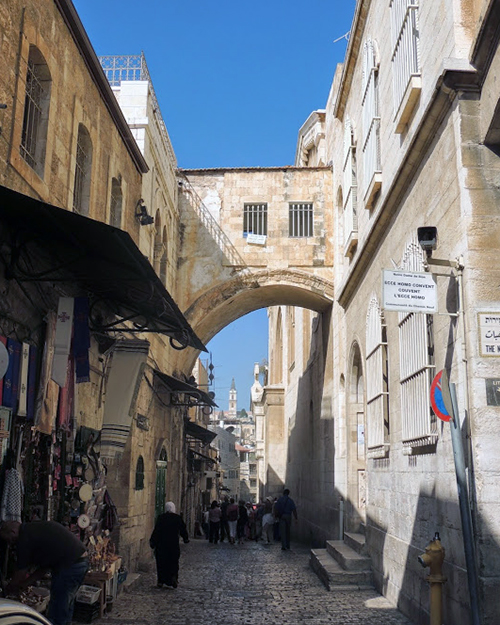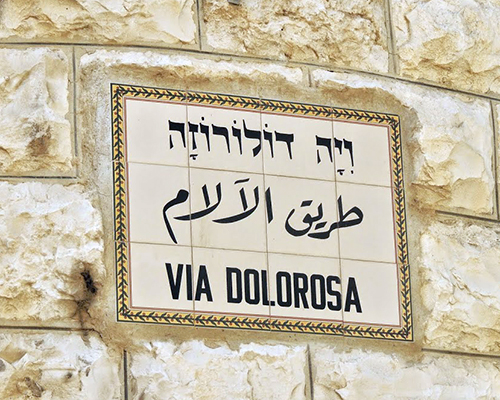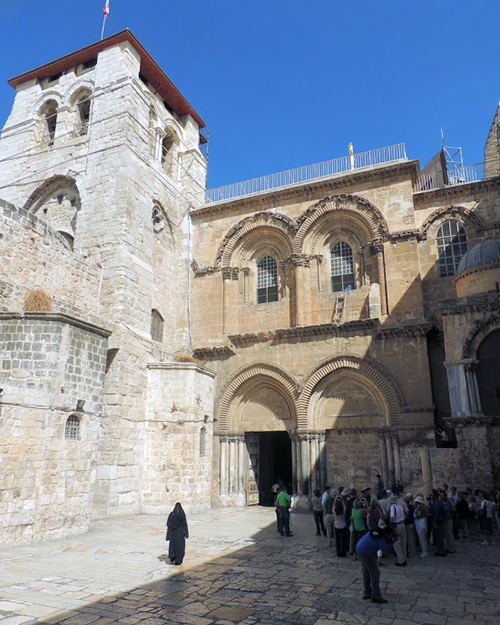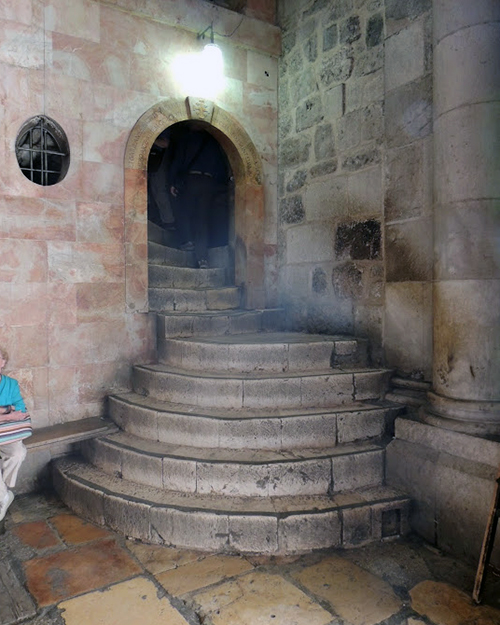

by Author
Synopsis: Every day, visitors to Jerusalem walk the Via Dolorosa and later tell their friends that they walked the actual path that Jesus took to the cross. However, is this accurate?
Walking through the Old City of Jerusalem is figuratively and literally walking through history. Around every corner is a building or sidewalk or wall that has some historical significance. Between all of those sites, you have the modern-day shops that are a mixture of typical tourist traps and legitimate stores that the locals use every day to purchase their necessities of life.
One of the most famous paths through the Old City is the Via Dolorosa. This 600-meter path winds its way from its origination point in the Muslim Quarter and ends at the Church of the Holy Sepulchre in the Christian Quarter. The term “Via Dolorosa” is Latin for the “Way of Grief” or the “Way of Sorrows.” This path is the traditional path Jesus took to Golgotha after being sentenced to death by Pontius Pilate.
To fully understand the actual relevance of the path, you have to understand some key pieces of information.
First, the path assumes that Jesus’ final trial before Pontius Pilate took place in the Antonia Fortress, a Roman military barrack on the northwestern corner of the Temple Mount.
Second, the path assumes that Golgotha, the site of Jesus’ crucifixion, was in the area of the current location of the Church of the Holy Sepulchre in the Christian Quarter of the Old City.
Third, the path assumes that no geographical changes have occurred in Jerusalem since the first century. In other words, the location of the ground today is the same as it was 2,000 years ago.
If you were to speak to a casually religious person who has not fully investigated these assumptions for themselves, they would tell you without hesitation that the current Via Dolorosa is the actual path that Jesus walked. Indeed, over the past several years as I have traveled to Jerusalem, I have witnessed hundreds of people walking this same path believing these assumptions to be true.
As students of God’s word, we know that true wisdom comes from an in-depth study of what the Scriptures tell us. With that being said, let us take a closer look at these three assumptions.
The first assumption deals with the location of Jesus’ trial before Pilate. When Jesus was led before Pilate, the Scriptures tell us that Jesus was taken to the praetorium to stand before Pilate (Mark 15:16, John 18:33, NKJV). The original meaning of the word praetorium signified a commander’s tent when he was in the field with the soldiers. By the time of the first century, the meaning of the word had changed slightly to mean a headquarters building. Often, this was in the form of a palace. The English Standard Version (ESV) translates the word praetorium in Mark 15 as “palace” and in John 18 as “governor’s headquarters.” Consequently, Jesus’ trial before Pilate would have likely been in a public area at the Roman palace which was located on the western side of the city instead of at the Antonia Fortress.
The second assumption deals with the location of Jesus’ death. When Constantine became emperor of Rome in the early 4th century AD, he declared religious tolerance for Christianity and eventually converted to Christianity himself. On his order, the Church of the Holy Sepulchre was built on the purported site of the crucifixion and burial of Jesus. Modern-day visitors to the church building will recognize that it falls within the city walls of the Old City of Jerusalem. However, during this first century, this area was outside the city. This agrees with John 19:20 about the location of Golgotha being near the city. While I cannot make the same conclusion that others have made about the very specific location of where the cross was erected and where the actual tomb was located, I do believe that the Church of the Holy Sepulchre is in the general location of Golgotha.
The final assumption states that there have been no geographical changes to the city in the last two millennia. Basic archaeology across the city of Jerusalem has proven this false over and over. The city of Jerusalem has been destroyed and rebuilt many times. Each time, rubble collects in the low areas, and the land is consequently reshaped for new construction. Archaeological excavations across the city of Jerusalem reveal that first-century artifacts are found several feet under the present ground level.
So, is the current Via Dolorosa the actual path that Jesus took as He walked to the cross? No. Not only is the first-century level much farther below ground level but given the fact that his final trial before Pilate probably took place in the palace, as opposed to the Antonia Fortress, the current path is probably not even in the right direction.
Even so, as I lead tour groups around the Old City of Jerusalem, we typically will walk the entire Via Dolorosa. I do this for two reasons: First, I want them to understand that walking the path helps them to understand what so many people believe. Knowing and understanding what they believe will help them be better teachers of the truth. Second, walking the path and talking about the events that we read about in the Gospels is a wonderful way to remember what Jesus went through for all of us. Can you think of a better way to spend your day? Neither can I.
Author Bio: Barry is the founder of Exploring Bible Lands, LLC and leads Bible study tours to the land of Israel. He also works with Appian Media to produce biblically-sound videos used in teaching others about the Bible. He and his wife, Tabatha, have three children, live in Athens, AL, and worship with the Capshaw church of Christ. He can be reached at barry.britnell@exploringbiblelands.com.

Image 1: The Ecce Homo Arch which is near the beginning of the Via Dolorosa. "Ecce Homo" is Latin for "Behold the Man."

Image 2: A street sign of the Via Dolorosa.

Image 3: The Church of the Holy Sepulchre.

Image 4: Steps inside the church leading up to the traditional location of Calvary.